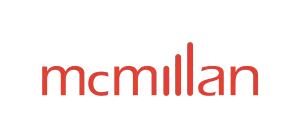On March 25, 2025, Quebec tabled its fiscal budget for 2025-2026 (the "Budget"). The Budget notably introduced significant changes to the province's innovation tax incentive landscape through two redesigned programs: the Tax Credit for R&D, Innovation and Pre-commercialization and the Tax Credit for E-business Integrating Artificial Intelligence.
Tax Credit for R&D, Innovation and Pre-commercialization ("CRIC")
The new CRIC aims to boost scientific research and experimental development across all sectors. It consolidates eight previous tax credits into a single program with a fully refundable basic rate of 20% (up from 14%) and an enhanced refundable rate of 30% on the first $1 million of qualifying expenditures. The enhanced rate is now available to all eligible businesses regardless of size, eliminating asset-based restrictions that applied under the predecessor programs.
In very general terms, any corporation or any partnership that has a corporate partner or partners,1 that operates a business in Quebec and that conducts qualifying activities there (or has activities carried out in Quebec on their behalf) is eligible for the credit.
The CRIC has significantly expanded the scope of its predecessors by adding two new categories of eligible expenses. First, it now includes capital expenditures for property used in R&D activities in Quebec. While this covers most equipment and specialized property, certain items are specifically excluded, namely, land, buildings, and leasehold interests. Second, it covers pre-commercialization activities like technological validations, regulatory testing, and product design work that follows R&D activities. These pre-commercialization activities include associated salaries and contract costs, as well as capital expenditures, subject to the same exclusions for land, buildings, and leases.
Most notably, the CRIC is a fully refundable credit. This means that even pre-revenue businesses and startups with nil tax liabilities stand to generate financial benefits by accessing the CRIC, provided that they expend an amount in excess of the applicable exclusion threshold2.
Tax Credit for E-business Integrating Artificial Intelligence ("TCEB")
The revised TCEB aims to support businesses in the information technology sector with a particular focus on artificial intelligence ("AI") development. It maintains its 30% total rate with a gradual shift in composition: the refundable portion will start at 23% (decreasing to 20% by 2028) while the non-refundable portion will begin at 7% (increasing to 10% by 2028).
To qualify for the TCEB, corporations3 must, among other things, have an establishment in Quebec and maintain a minimum of six eligible employees.
Following the announced changes, to benefit from the TCEB, corporations must now ensure that their activities meet specific criteria to integrate AI "to a significant extent", thus narrowing the scope from its predecessor, which had a broader focus on e-business. More specifically, under the revised TCEB, businesses must meet both of two key revenue tests: the "75% test" (i.e., at least 75% of gross revenue must come from the information technology sector) and the "50% test" (i.e., at least 50% of gross revenue must come from specific activities like software publishing, computer systems design, and now data processing). The revised TCEB adds data processing and hosting activities to the qualifying activities for the 50% test, broadening eligibility for AI-focused businesses.
The revised TCEB also eliminates the wage cap per eligible employee that previously applied, meaning that full salary amounts (to the extent that they exceed the applicable exclusion threshold) now qualify for the credit. This could benefit businesses which employ—and help to fund the recruitment of—specialized AI talent, which might command high salaries.
Finally, the revised TCEB also introduces new limits on the scope of qualifying activities: system maintenance and evolution activities no longer qualify (even when ancillary to development work), and businesses providing services to related entities for applications used outside Quebec will see their credit rate halved when such services exceed 50% of their revenue.
Strategic Implications for Businesses
The new opportunities created through the broadened scope of these measures should be of interest to investors for the following reasons:
- Neither the CRIC nor the TCEB is contingent on the claimant being an entity that is based in Quebec or controlled by residents of Quebec and/or Canada.
- Both programs include generous refundable tax components, which are not contingent upon the company being in a taxable position. Moreover, neither program excludes pre-commercialization activities. This could be a particular boon for businesses which are seeking needed financial support during the start-up phase.
- Large corporations should be able to access the enhanced 30% CRIC rate regardless of asset size. Corporations with assets over $50 million that previously could only claim 14% may want to reassess their R&D strategies. Also, the new basic CRIC refundable basic rate of 20% could also be a draw for corporations at every stage of development.
- Equipment-intensive innovators will benefit from the inclusion of capital expenditures under the CRIC, making Quebec a particularly attractive base to conduct R&D activities that require significant investment in equipment.
- Corporations looking to bridge the gap between the R&D and market entry phases of their business may want to consider entering the Quebec market as a strategic step.
- AI technology developers and, more generally, data processing businesses may now qualify for the first time under the revised TCEB. This makes Quebec a prime jurisdiction for AI development firms looking to leverage both enhanced R&D support and specialized AI incentives.
It would be prudent for current claimants to review their existing innovation activities for their exposure based on the new criteria, particularly TCEB recipients which are focused on routine e-business maintenance, as they may now be subject to a restricted scope or complete loss of eligibility.
It should be noted that the foregoing conclusions are subject to further change given that draft legislation to enact the CRIC and to revise the TCEB has yet to be introduced.
The CRIC applies to taxation years beginning after March 25, 2025, and the TCEB changes are to take effect for taxation years beginning after December 31, 20254, giving businesses time to evaluate their innovation strategies in light of these changes and to position themselves to maximize these opportunities (and to minimize the impact of restrictions).
Footnotes
1 While partnerships can conduct qualifying activities, they cannot directly claim the CRIC. Instead, corporations that are members of an eligible partnership may claim their proportionate share of the credit based on the partnership's qualifying expenditures, provided these corporations are not in excluded categories and are not specified members in the partnership.
2 In very general terms, the CRIC exclusion threshold is the greater of $50,000 or the total salary costs associated with employees' time spent on R&D and pre-commercialization activities, calculated using a formula that considers the ratio of each employee's R&D/pre-commercialization hours to their total working hours and the basic personal tax credit amount ($18,571 for 2025).
3 While draft legislation has yet to be introduced, it appears to be contemplated that only a corporation may claim the TCEB.
4 Corporations may elect to have the TCEB changes apply earlier, for any taxation year that begins after the day of the budget speech and before January 1, 2026. To make this election, corporations must file a written request with Investissement Québec before the expiry of the ninth month following the due date for filing their tax return for the relevant taxation year.
The foregoing provides only an overview and does not constitute legal advice. Readers are cautioned against making any decisions based on this material alone. Rather, specific legal advice should be obtained.
© McMillan LLP 2025



